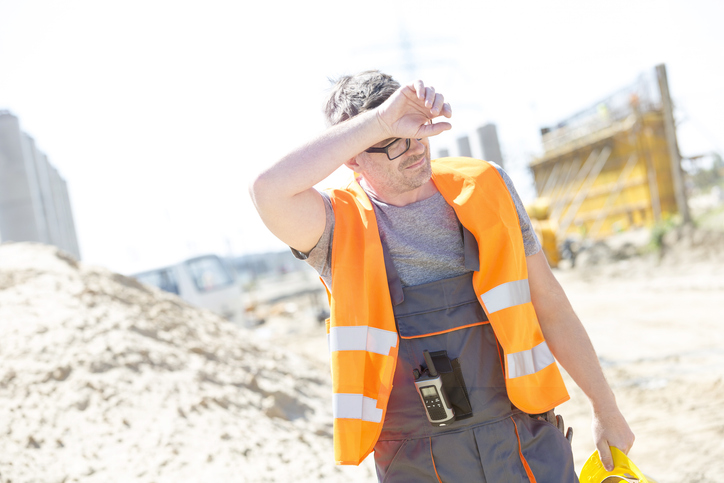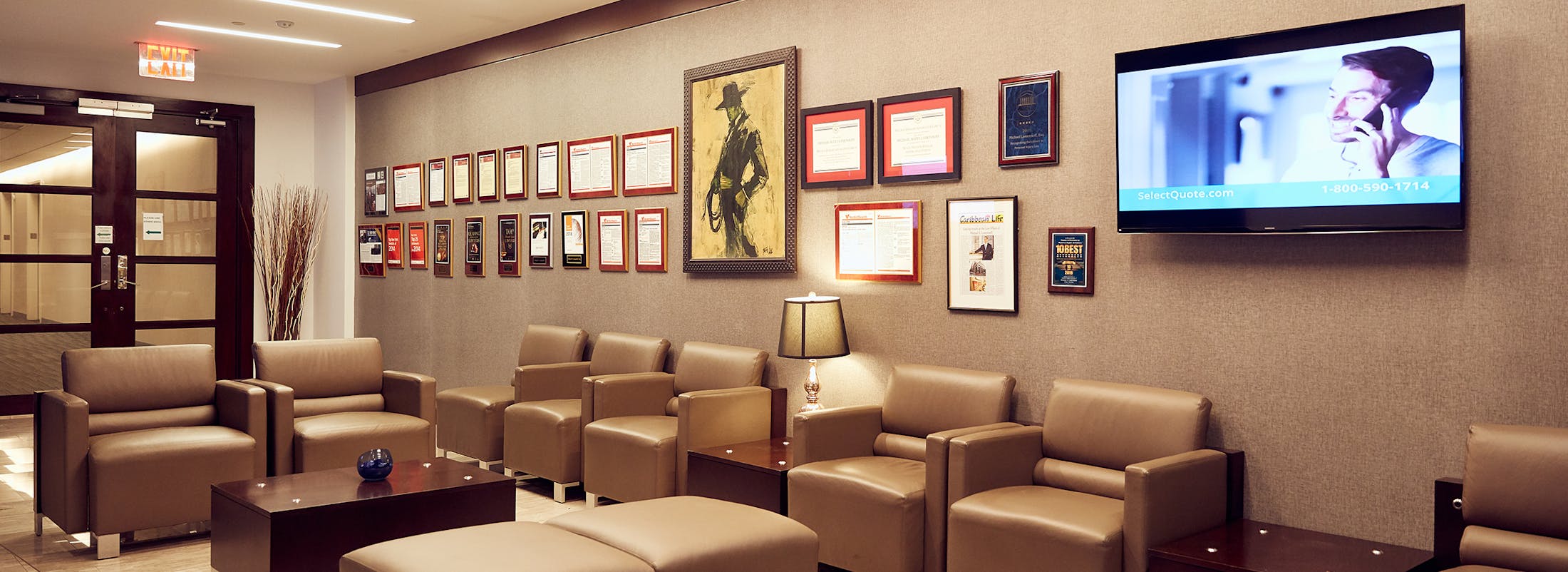Heat-Related Injuries on Construction Sites in New York City

Working on a construction site in New York City can be grueling, especially during the hot and humid summer months. Heat-related injuries are a serious concern, as construction workers are often exposed to extreme temperatures, direct sunlight, and physically demanding labor. When employers fail to provide adequate protection, training, and resources, workers face an increased risk of heat-related illnesses, which can range from minor discomfort to life-threatening conditions.
Common Heat-Related Injuries on Construction Sites
Heat Exhaustion
- Causes: Heat exhaustion occurs when the body overheats due to prolonged exposure to high temperatures, especially when combined with strenuous activity. The body's natural cooling mechanisms, such as sweating, become insufficient.
- Symptoms: Heavy sweating, dizziness, muscle cramps, weakness, nausea, and fainting are all signs of heat exhaustion.
- Consequences: If untreated, heat exhaustion can escalate to heat stroke, a life-threatening condition.
Heat Stroke
- Causes: Heat stroke is the most severe heat-related injury and occurs when the body temperature rises above 104°F (40°C). This happens when heat exhaustion is not treated promptly or when the worker's body is overwhelmed by the heat.
- Symptoms: Confusion, slurred speech, loss of consciousness, rapid pulse, and lack of sweating despite the heat.
- Consequences: Heat stroke can cause brain damage, organ failure, and death if not treated immediately.
Dehydration
- Causes: Construction workers in New York are at high risk of dehydration due to heavy sweating from physical labor under the sun. Inadequate water intake exacerbates the problem.
- Symptoms: Thirst, dark urine, dizziness, headaches, and extreme fatigue.
- Consequences: Severe dehydration can lead to kidney damage, loss of consciousness, and even death.
Heat Cramps
- Causes: Heat cramps are muscle spasms caused by the loss of salt and water from excessive sweating.
- Symptoms: Painful muscle cramps, especially in the legs, arms, and abdomen, often during or after intense physical labor in hot conditions.
- Consequences: While less severe than heat stroke, heat cramps can still hinder a worker’s ability to continue working safely and may be an early warning sign of heat exhaustion.
Heat Rash
- Causes: Heat rash occurs when sweat gets trapped in the skin’s pores, causing small, itchy red bumps.
- Symptoms: Itching, redness, and discomfort on areas of the body covered by clothing.
- Consequences: While heat rash is not life-threatening, it can cause considerable discomfort and signal that the worker is overheating.
Sunburn
- Causes: Prolonged exposure to ultraviolet (UV) radiation from the sun without proper protection leads to sunburn.
- Symptoms: Red, painful skin that can peel and blister after exposure.
- Consequences: Sunburn increases the risk of skin cancer and can exacerbate heat exhaustion.
Rhabdomyolysis
- Causes: This serious condition results from muscle breakdown due to extreme heat and physical exertion. When muscles break down, they release proteins into the bloodstream that can cause kidney damage.
- Symptoms: Muscle pain, weakness, dark-colored urine, and swelling in the limbs.
- Consequences: Rhabdomyolysis can lead to kidney failure and death if untreated.
Heat Syncope
- Causes: Heat syncope is a sudden loss of consciousness or fainting due to prolonged standing or rapid movement from a sitting or lying position in hot environments.
- Symptoms: Dizziness, lightheadedness, and fainting.
- Consequences: While typically temporary, heat syncope can cause falls or other secondary injuries that may require medical attention.
Heat Edema
- Causes: Heat edema occurs when blood vessels expand due to heat exposure, causing fluid to accumulate in the lower extremities.
- Symptoms: Swelling in the hands, feet, and ankles.
- Consequences: Although not life-threatening, heat edema can cause discomfort and may be an early indicator of a worker's body struggling to cope with heat.
Heat-Induced Cardiovascular Strain
- Causes: High heat and humidity can increase cardiovascular strain as the heart works harder to pump blood and maintain normal body temperature.
- Symptoms: Increased heart rate, chest discomfort, and dizziness.
- Consequences: Prolonged cardiovascular strain can lead to more severe heart conditions or exacerbate pre-existing heart issues, posing life-threatening risks for workers.
Causes of Heat-Related Injuries on Construction Sites
Heat-related injuries can result from several factors on NYC construction sites, including:
- High Temperatures: Prolonged exposure to temperatures above 90°F (32°C) dramatically increases the risk of heat-related injuries.
- Humidity: New York’s high humidity makes it difficult for sweat to evaporate, hindering the body’s ability to cool down naturally.
- Physical Labor: Construction work is physically demanding, requiring workers to exert energy in high-heat environments.
- Improper Hydration: Workers may not have easy access to drinking water or may not drink enough fluids to replenish what is lost through sweat.
- Lack of Rest Breaks: Continuous work without adequate breaks in the shade can quickly lead to overheating.
- Inadequate Training: If workers are not trained to recognize the symptoms of heat-related illnesses, they may continue working until the condition becomes severe.
Preventative Measures for Heat-Related Injuries
Construction companies and site managers are responsible for ensuring the safety of their workers, particularly during hot weather. Preventative measures can greatly reduce the risk of heat-related injuries, including:
- Hydration: Employers should provide easy access to cool, clean drinking water, encouraging workers to hydrate regularly throughout the day.
- Shaded Rest Areas: Workers should have designated areas with shade or air conditioning for rest breaks.
- Regular Breaks: Employers should mandate frequent breaks, especially during peak heat hours.
- Adjust Work Schedules: Work should be scheduled for early mornings or late afternoons to avoid the hottest part of the day.
- Protective Clothing: Workers should be provided with lightweight, breathable clothing and wide-brimmed hats for sun protection.
- Heat Safety Training: Employers are required to train workers to recognize heat-related illnesses and to take immediate action when symptoms arise.
Legal Rights and Protections for Heat-Related Injuries
In New York, construction workers are entitled to a safe workplace under both federal OSHA regulations and state labor laws. Employers have a legal duty to provide protection from known hazards, including heat-related risks. Workers who suffer heat-related injuries may be entitled to compensation through workers’ compensation or, in some cases, third-party lawsuits if negligence is involved.
OSHA's Heat Safety Standards
Although OSHA does not have specific regulations solely for heat stress, the agency enforces the General Duty Clause, which mandates that employers must provide a workplace free of serious recognized hazards, including heat. Employers can face penalties for failing to implement adequate safety measures to protect workers from heat-related injuries.
Call to Action: Protect Your Rights with Michael S. Lamonsoff, Esq.
If you or a loved one has suffered from a heat-related injury on a New York City construction site, don’t wait to seek the compensation you may be entitled to. Michael S. Lamonsoff, "The Bull," at the Law Offices of Michael S. Lamonsoff, is a powerful advocate for injured construction workers.
With 1,400+ outstanding client reviews and a formidable record of financial recoveries exceeding $500 million for injured victims, Michael S. Lamonsoff is one of the most trusted and respected construction accident attorneys in NYC. Reach out to “The Bull” today and let him fight for the justice and compensation you are owed. To schedule your free consultation, call us at 212-962-1020 or fill out this online contact form.

